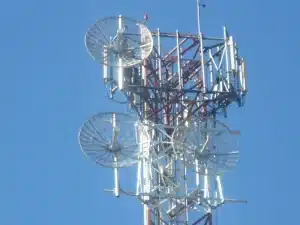When it comes to planning remote mobile coverage, one of the primary concerns that often takes center stage is the uplink budget. The VEGA high gain antenna, in most scenarios, serves as the limiting factor when striving for high Quality of Service (QoS) in remote target areas. In such situations, it becomes imperative to identify tools that can effectively and cost-efficiently enhance the QoS for these remote targets.
The VEGA High Gain Antenna: A Focused Solution
The VEGA high gain antenna is ingeniously engineered to concentrate its radiation pattern into a narrow, precise beam, allowing it to channel its energy in a specific direction. It’s important to understand that the principles of reciprocity apply here—what holds true for the antenna’s downlink function also applies to the uplink. This focused energy concentration affords several distinct advantages over conventional wide beam antennas, particularly in the realm of uplink performance.

Key Benefits of VEGA High Gain Antennas
Here are the fundamental benefits of utilizing a VEGA high gain antenna:
1: Amplified Signal Strength The slender beam of a high gain antenna excels in capturing a stronger signal from a specific direction, thereby enhancing signal strength at the receiving end. This augmented signal strength plays a pivotal role in surmounting signal attenuation and interference, ultimately culminating in an improved uplink performance.
2: Extended Reach Thanks to its energy concentration, a high gain antenna is proficient at receiving signals from more remote sources compared to wide beam antennas. The narrow beam minimizes signal spreading losses, facilitating communication with distant sources—an especially valuable asset for addressing long-range uplink requirements.
3: Enhanced Signal Quality The narrower beam of a high gain antenna enhances spatial selectivity, reducing the impact of unwanted signals and noise originating from other directions. This improvement in the signal-to-noise ratio results in elevated overall signal quality and heightened uplink channel reliability.
4: Augmented Link Budget The link budget encapsulates the cumulative system gains and losses within a communication link. A high gain antenna substantially bolsters the link budget by increasing the antenna gain, a positive gain term in the uplink equation. This added gain effectively compensates for losses in other facets of the system, such as cable losses or atmospheric attenuation, ultimately leading to an overall uplink performance improvement.
5: Interference Mitigation The narrow beam of a high gain antenna notably diminishes the chances of interference from adjacent or co-channel signals. This quality facilitates better isolation and minimizes the likelihood of signal overlap or collision, particularly beneficial in environments characterized by dense high-level interferences.

Considerations for Effective Deployment
It is essential to note that high gain antennas, while offering these benefits, typically encompass a narrower coverage area when compared to wide beam antennas. Thus, their effective deployment necessitates precise antenna alignment toward the intended target.
VEGA High Gain Antennas: An Essential Tool in Cellular RAN Planning
In conclusion, VEGA Parabolic Reflector high gain antennas stand as a pivotal addition to the Cellular RAN planner’s arsenal. Their ability to enhance uplink performance, extend range, improve signal quality, and mitigate interference, among other advantages, positions them as an indispensable resource in addressing the complexities of remote mobile coverage.
Further Exploration
For an in-depth understanding and additional details, we invite you to explore our website at www.comarcom.com. Here, you can access comprehensive insights into how VEGA high gain antennas can play a transformative role in optimizing cellular networks.


